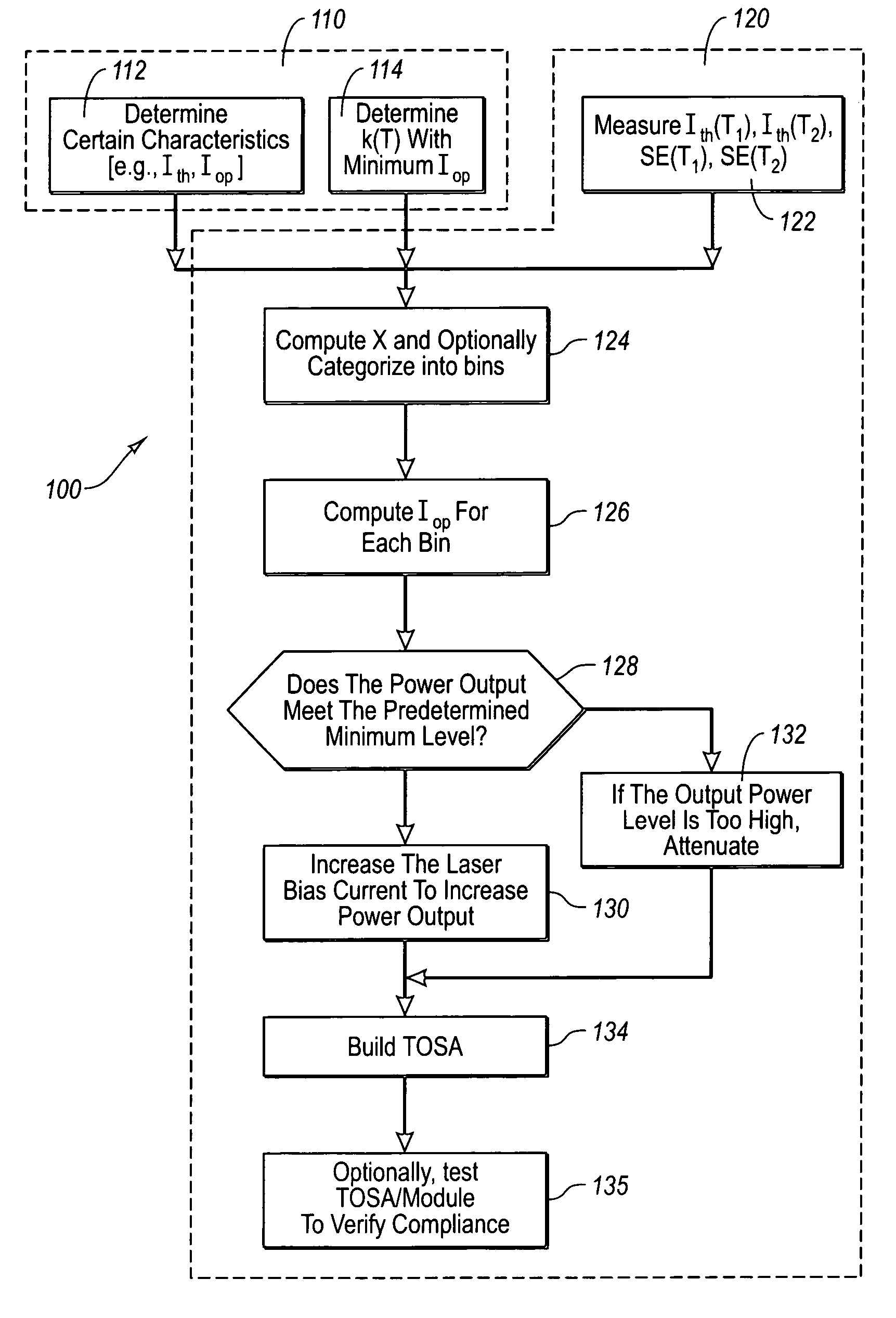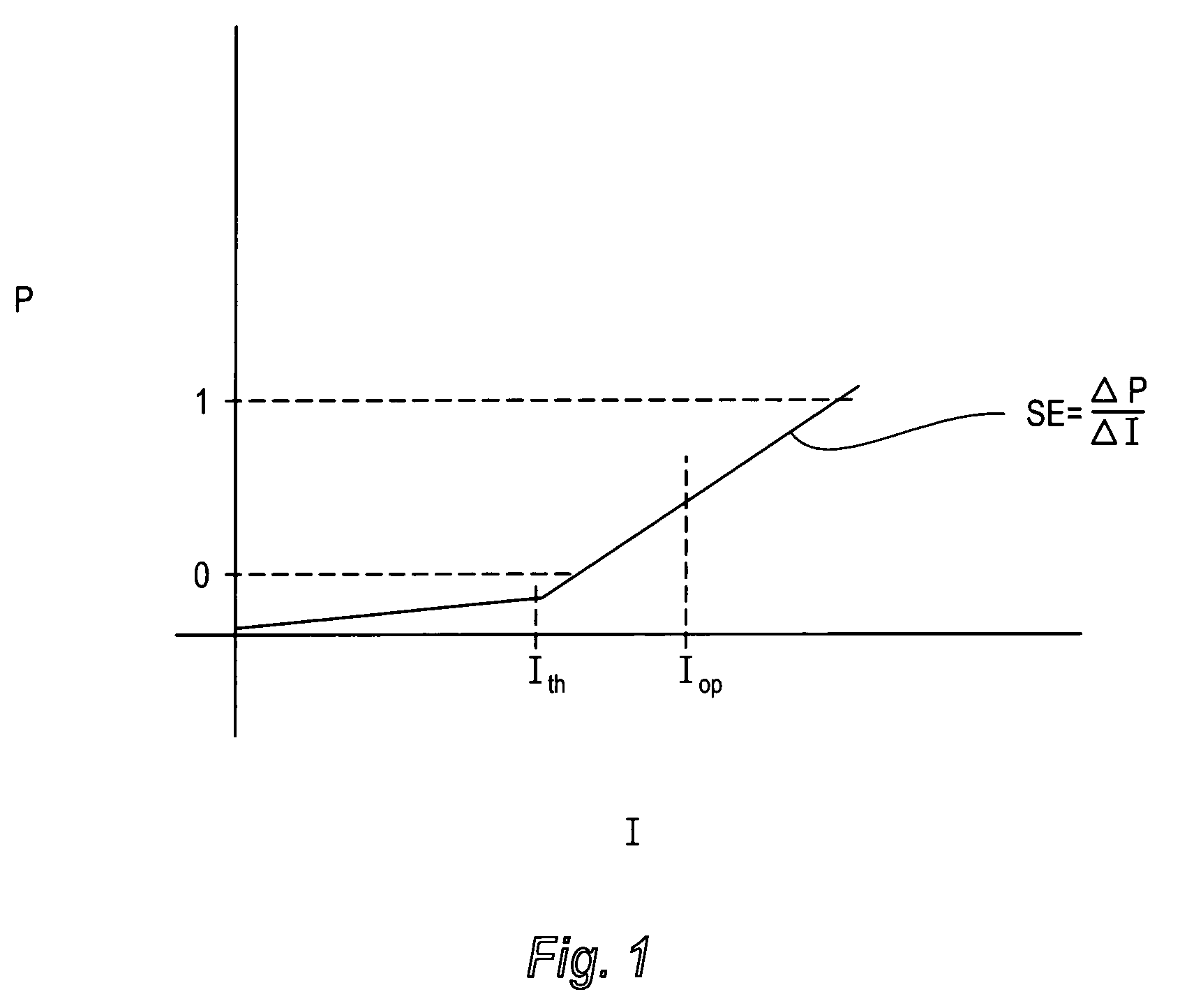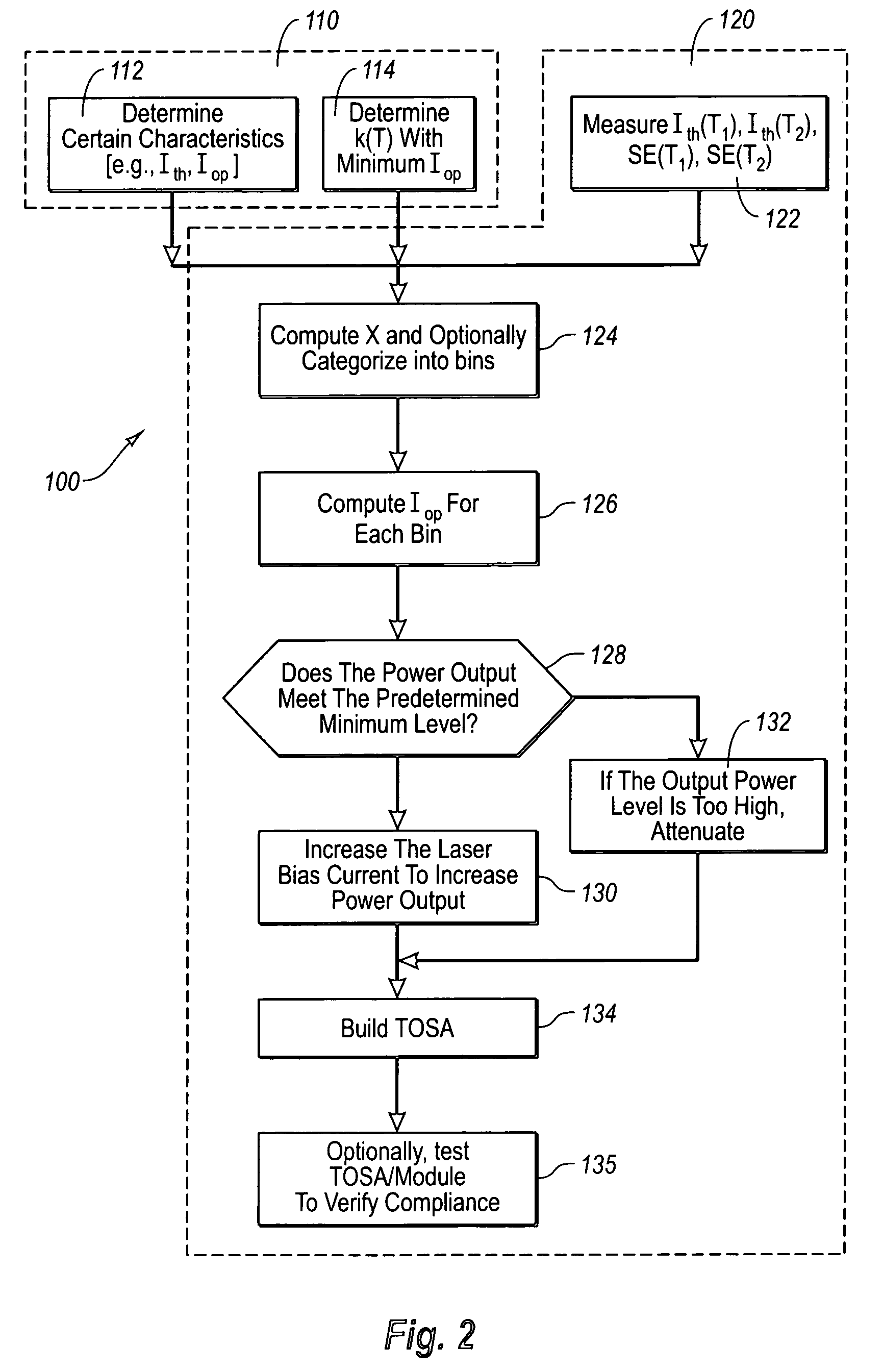Method for optimizing laser diode operating current
a laser diode and operating current technology, applied in the direction of laser details, semiconductor lasers, electrical apparatus, etc., can solve the problems of limiting the useful bandwidth of the dc drive, and unable to achieve the speed of operation. , to achieve the effect of sufficient speed of operation
- Summary
- Abstract
- Description
- Claims
- Application Information
AI Technical Summary
Benefits of technology
Problems solved by technology
Method used
Image
Examples
Embodiment Construction
[0016]The present invention is a method for optimizing the dc drive current of a laser diode to produce the desired power and speed performance throughout a range of operating temperatures. Currently, optimization of dc drive current is complicated by the fact that each laser has different characteristics from others due to differences in manufacturer, epitaxial design, or wafer / lot. The invention simplifies the optimization process by conducting the optimization process for a group of lasers, wherein each group is reasonably expected to exhibit unique behavior. The specific criteria for this categorization depend on the degree and type of variation that is considered acceptable for a particular application. Once the lasers are categorized, certain properties of a statistical sample of lasers from each group is measured. In addition, certain measurements must be made for each of the particular laser diodes in the statistical sample group. The measurement data is then used to determi...
PUM
 Login to View More
Login to View More Abstract
Description
Claims
Application Information
 Login to View More
Login to View More - R&D
- Intellectual Property
- Life Sciences
- Materials
- Tech Scout
- Unparalleled Data Quality
- Higher Quality Content
- 60% Fewer Hallucinations
Browse by: Latest US Patents, China's latest patents, Technical Efficacy Thesaurus, Application Domain, Technology Topic, Popular Technical Reports.
© 2025 PatSnap. All rights reserved.Legal|Privacy policy|Modern Slavery Act Transparency Statement|Sitemap|About US| Contact US: help@patsnap.com



